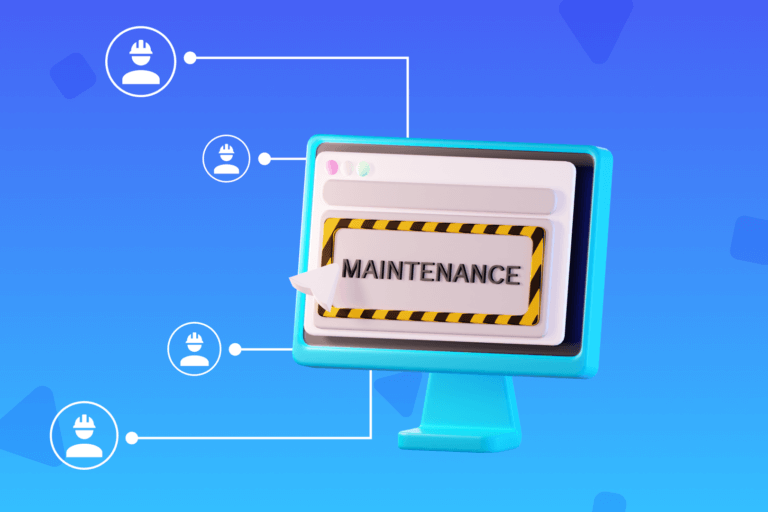Its pertinent and constant application allows to draw accurate diagnoses, recognize weaknesses, improve inefficient processes, take advantage of development opportunities and contribute to the general competitiveness of any company.
The competitiveness of modern companies is measured both by their ability to transform and digitize processes, and to evaluate the performance of their teams. In this way, it is possible to be certain that progress is being made towards meeting the objectives.
For this, it is necessary to design and apply performance indicators that cover all the key strategic actions for the success of our core business. Within this group, two important sectors stand out due to their direct impact on general productivity: occupational health and safety.
Technical definitions
Technically, an indicator is the relationship established between two or more quantitative or qualitative variables. This relationship makes it possible to observe and compare the current state, as well as the changes generated in an object, a scenario, a work team, or in the various areas of an organization, for example.
In this way, valuable conclusions are obtained regarding the fulfillment, or not, of the planned objectives and goals. Likewise, it can be determined whether the expected impacts occurred, or whether other unforeseen events were generated.
These indicators can be values, mathematical formulas, units, indices or statistical series, among other options, and are the fundamental tools for any successful evaluation.
Importance of indicators
Within any business strategy, indicators are valuable for various purposes:
- Evaluate the management.
- Identify opportunities for improvement.
- Adapt objectives, goals and strategies to reality.
- Sensitize those who make strategic decisions, and those who are the object of them.
- Take preventive measures in time.
- Communicate in an agile and summarized way ideas, thoughts and values.
It is also important to work on the basis of multiple indicators, because if they are applied in isolation, or only once, they will be of little use.
On the contrary, if they are analyzed according to multiple variables such as time, people and place, and their results are combined with other benchmark indicators, they become powerful management tools.
In this way, they allow permanently updated diagnoses of each situation, helping to make strategic decisions, and to verify whether they were correct or not.
Health and safety indicators
Within this framework of action, occupational health and safety indicators are an essential instrument to assess how well workers are protected from dangers and risks related to the performance of their work.
This importance lies in the fact that these indicators are used, both by companies and other public and private organizations, to formulate policies and programs aimed at preventing accidents, injuries and occupational diseases.
Likewise, they are used to supervise the application of prevention programs, and to define particular areas of greater risk, depending on the activity carried out, geographical area or specific work area, among other variables.
These characteristics allow the indicators to be the cornerstone of any Occupational Risk Prevention, or ORP plan, as they will help to establish a series of measures that will reduce risks and make the company a safer place to work.
These indicators include:
Results indicators: Correspond, for example, to the number of occupational injuries and illnesses registered in a certain period, as well as the number of workers affected, and the days of work lost (among other multiple possible variables).
Capacity and competence indicators: They correspond to the number of inspectors or professionals in charge of health and safety in the different areas of the company.
Reactive indicators: These are the statistical indices that express in figures the accident rate characteristics of a company, detailing its various areas, sections or centers. These statistics provide useful values to compare your own performance with that of other competing companies within the same sector, for example.
These indices include, for example, the “Frequency Index” (how many times events occur in a certain period), the “Severity Index” (what were the consequences of these events), and the “Incidence Index” (how they affect the productivity of the company).
How to implement a plan based on good Health and Safety indicators
However, having the best tools is not always a guarantee of absolute success. It also requires adequate advice and good integration of prevention. This implies, for example, observing if the application of indicators has been developed correctly, and if the initial prevention objectives have been achieved.
This objective can be achieved through efficient systems designed on the basis of a correct integration of prevention in the management system of each company. Only in this way it will be possible to continue moving forward, reaching objectives and eradicating errors.
To properly manage this prevention, it is necessary to measure and quantitatively assess a set of data, in order to be able to compare present results with those obtained in other periods. Only in this way we can determine if any situation is improving or worsening.
This requires working with indicators of practical utility. The most common are the following:
Outcome indicators
They refer to the completion terms of a task. Pre-established preventive objectives in planning are taken as a starting point, and it is observed which ones have actually been met, and to what extent.
Indicators of performance
They provide information on the performance associated with a task, project or process, depending on the methods used for its execution and the way in which it is approached. The information obtained helps to identify weaknesses, strengths and also opportunities for improvement.
These indicators are vital to determine if the implementation of prevention measures is really successful. This translates into crucial information to improve the ORP system.
Reactive and active indicators
The reactive indicators refer to fait accompli. That is, if there have been accidents, incidents, professional illnesses, or deviations from regulatory compliance, among other options. If any of these events are identified, we must take immediate actions, because it means that the ORP is failing.
The active indicators identify the efforts made by the company’s leadership to avoid risks. For example, healthy investments, conditioning of machinery and facilities, investments in training, coaching and/or mentoring programs, mobility plans, or road safety simulators, among other actions.
Efficacy indicators
They are related to the capacity of the teams or areas to carry out their respective tasks. They can be actions such as:
- Systematic and periodic inspections of work places and equipment, through electronic checklists like DataScope.
- Surveys to the members of the organization, to verify the operation of different aspects related to occupational health and safety management.
- Internal audits of the prevention management system.
- Surveys to assess the effectiveness of training activities.
Efficiency indicators
A measure can be implemented effectively, in order to adequately meets the objective set (reduce accidents). But at the same time, it can be inefficient, because it took too long, or consumed more resources than necessary, for example.
Therefore, it is necessary to implement indicators that measure the ideal efficiency, in terms of economy, resources and time. This will make it possible to determine which preventive actions are being carried out efficiently, and which can, in turn, be improved.
Practical examples of occupational health and safety indicators
All these characteristics reaffirm the fact that the indicators are essential to carry out a correct integration of prevention in the occupational health and safety management systems. This is it, because they identify the aspects that actually work, and those that must be improved.
To better meet this objective, it is necessary to use all the tools that allow the company to be healthier, safer and more competitive.
An example widely used today, due to its efficiency and effectiveness, is the PDCA Cycle, also called the Deming Cycle, which is made up of 4 actions:
Plan: First of all, we must determine the measures we want to adopt in prevention, indicating those responsible for carrying them out, and the deadlines in which they should be implemented. In order to achieve this objectives, it is necessary to previously set preventive goals and establish a relevant management policy.
Do: The previously planned actions must be put into practice.
Verify: Once the implementation of the ORP plan has taken shape, the processes must be monitored, to verify the achievement of objectives, detect possible failures, and check the points where preventive measures must be reinforced. In turn, we must take corrective actions and carry out the necessary mediation processes in order to manage eventual disagreements inside the team.
Act: The process must be analyzed, from the beginning to the end of the cycle, and carry out the necessary actions to preserve the security of the company. At this point, it is necessary to have a proactive attitude to identify failures, and constantly propose improvement solutions.







